Apr 19, 2021 | Native Hope
There are currently 6.7 million Native Americans living in the United States. However...
Living descendants of the Pueblo Native American tribe only make up 1.2 percent of that number.
While Pueblo Native Americans make up a small percentage of living American Indians today, there are 574 federal and state-recognized tribes in America. It can be challenging to recognize and appreciate the significant differences between each unique tribe.
Today, we’re taking a closer look at Pueblo Native Americans — where they came from and where they are now.
History of Pueblo Native Americans
Pueblo Native Americans are one of the oldest cultures in the United States, originating approximately 7,000 years ago. Historians believe the Pueblo tribe descended from three cultures, "including the Mogollon, Hohokam, and Ancient Puebloans (Anasazi)." Representative of the Southwest American Indian culture, the Pueblo tribe settled in the Mesa Verde region at the Four Corners of Colorado, New Mexico, Utah, and Arizona.
Due to limited natural resources or intertribal conflict, in the 1300s, the Pueblo people migrated south and primarily settled in northeastern Arizona and northwestern New Mexico. Following Christopher Columbus' voyage to the New World, Spain embarked on claiming various North American territories. In the 15th century, Spanish colonization's detrimental effects befell the peaceful Pueblo tribes — resulting in censorship of Pueblo culture and religious practices.
By the 1670s, Pueblo revolts forced the Spanish to flee, and the Pueblo people were able to return to their generation-long cultural practices. Years later, once the Spanish returned and re-colonized, many Native American tribes were forced to adapt to the dominant culture as a means of survival, and this history of trauma has impacted the Pueblo people to this day.
Who Were the Ancient Pueblo? Fast Facts
Ancient Pueblo History and Timeline
The history of Ancestral Pueblos can be broken down into the following time periods:
- Late Basketmaker II (AD 100-500)
- Basketmaker III (AD 500-750)
- Pueblo I (AD 750-950)
- Pueblo II (AD 950-1150)
- Pueblo III (AD 1150-1300)
- Pueblo IV (AD 1300-1600)
Throughout their history, Ancestral Pueblos migrated and had to adapt to a variety of different lands and techniques for gathering food. They also adapted the types of structures they called home throughout these time periods.
Modern Pueblo history is usually traced from 1600 on, since that is around when the Spanish colonial occupation began in their territory.
Ancient Pueblo Homes and Architecture
Ancestral Pueblos built their homes in complex systems that could only be accessed through swings or rock climbing. Their dwelling places included community spaces, multistoried and multi purposed structures for housing, religious ceremonies, and community meetings. Ancient Pueblo structures are thought to be archaeoastronomy focused, with the buildings built to align with the solar and lunar cycles.
Pueblo Native American Culture
In North America, the Pueblo people carry on their traditions, religious beliefs, and unique Pueblo villages — structures modeled after cliff dwellings. Traditional Pueblo architecture included limestone or adobe bricks (bricks made from clay and water) to construct "multistoried, permanent, attached homes."
Pueblo Native Americans practiced the Kachin or Katsina religion, a complex spiritual belief system in which "hundreds of divine beings act as intermediaries between humans and God." Religious councils, which used kivas — subterranean chambers of worship — for spiritual ceremonies and religious rituals, governed the Pueblo villages.
Evolving from a hunter-gathering lifestyle, the Pueblo people were known as peaceful farmers, herdsmen, basketmakers, and potters. The Pueblo American Indians expanded into an agricultural society — growing maize, pumpkins, seeds, tobacco, corn, beans, and squash while designing complex water irrigation systems.
Pueblo Native American Pottery
Iconic to the Native American arts, Pueblo pottery is "still produced today in a manner almost identical to the method developed during the Classic Pueblo period about AD 1050–1300." Once the Pueblo settled in the southwest, they ceased using baskets in favor of larger, more versatile clay pots.
Designs include geometric shapes and animal patterns, and color schemes were typically "polychromatic, black on black, or black on cream."
Pueblo Native American Katsina (Kachina) Dolls
Kachina dolls are wood carvings representing spirit-beings. They are used to educate the youth about their spirituality, religion, and culture. Only the Zuni Pueblo sell the dolls to outsiders, most keep them guarded because of their spiritual connection to the people. Kachina represent all things natural: the sun, moon, natural resources, animals, ancestors, and more. Once a doll is created it begins a life of its own — the doll is sacred. It is believed the Kachina doll was adapted from the Hopi by the Zuni Pueblo.
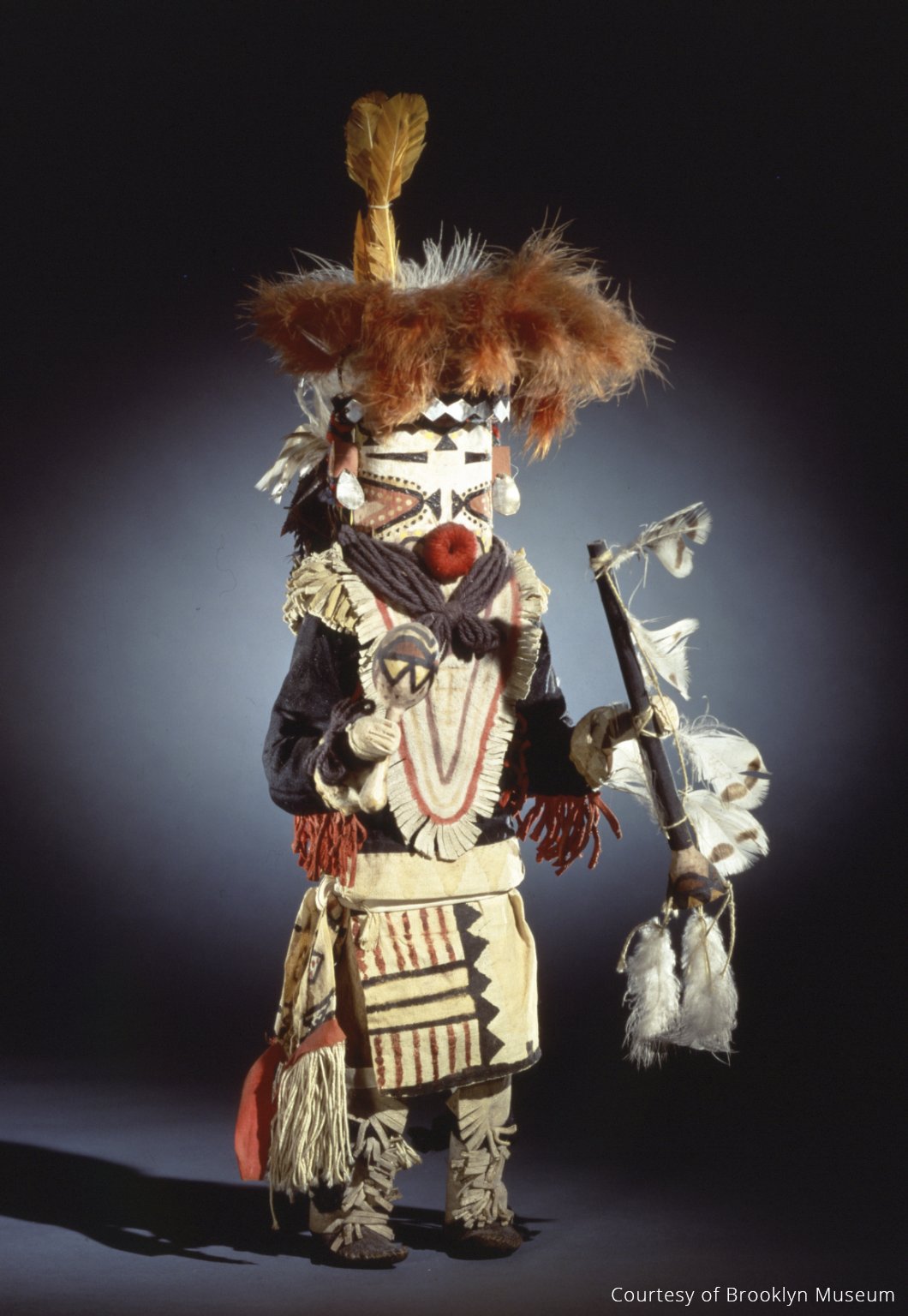
She-we-na (Zuni Pueblo).Kachina Doll (Paiyatemu), late 19th century. Wood, pigment, horsehair, feathers, wool, hide, cotton, tin, ribbon, 22 1/2 x 9 x 8 in. (57.2 x 22.9 x 20.3 cm). Brooklyn Museum, Museum Expedition 1903, Museum Collection Fund, 03.325.4631. Creative Commons-BY (Photo: Brooklyn Museum, 03.325.4631_SL4.jpg)
While Pueblo tribes were skilled in the art of agriculture, they were also avid hunters: "Many of the Rio Grande Puebloans had special hunting societies that hunted deer and antelope in the mountains, and easterly Puebloans such as the Taos and Picuris sometimes sent hunters to the Plains for bison. Among all Pueblo peoples, communal rabbit hunts were held."
Though hunters, the Pueblo also believed that the universe and nature — rivers, plants, animals — had souls or spirits. In particular, the Pueblo people worshipped "the mountain lion, hummingbird, bluebird, gopher, and the boulder goose." Butterflies and reptiles were also significant symbols within Pueblo culture.
Where are Pueblo Native Americans Today?
In the past 500 years, Native Americans have faced genocide, dislocation, and various forms of physical, mental, and social abuse. These factors have led to high rates of violence, assault, and abuse among the Native American people today.
Today, approximately 75,000 individuals of Pueblo descent still exist in America — most living in the southwest near the Mesa Verde region. These Pueblo descendants are dealing with generations of trauma. Members of the Pueblo tribe are skilled and passionate farmers, teachers, artists, musicians, business leaders, and public servants — but they are also struggling to connect with their cultural past while forging a sustainable and healthy path forward.
There are 19 Pueblo Tribes in New Mexico, and each is a sovereign nation with its own government. Some of the most iconic Pueblo nations include Acoma Pueblo, Santa Clara Pueblo, Taos Pueblo, Laguna Pueblo, and Isleta Pueblo.
Through storytelling and kinship, Pueblo Native Americans continue to uphold their culture and traditions, despite a pattern of censorship and abuse throughout the last several hundred years.
Famous Pueblo Native Americans
All over the nation, there are Pueblo descendants who are passionate about their heritage. Here are just a few noteworthy Pueblo Native Americans you may or may not have heard of:
- Popé, (1630-1690) — a Tewa man who led the Pueblo rebellion against the Spanish in 1680.
- Maria Martinez, (1884-1980) — a Pueblo artist, world-renowned for her black-on-black pottery.
- Deb Haaland, (1960-Present) — one of the first Native American women elected to serve in Congress.
 Mark Ford (Chiricahua Apache and Tewa/Tiwa, Pueblo) has joined Feeding America, the nation’s largest domestic hunger-relief organization, as Director of Native/Tribal Partnerships. Ford started on June 21 and is currently based in Phoenix, Arizona. As Director of Native/Tribal Partnerships, Ford will deepen the organization’s engagement with and understanding of native and tribal communities facing food insecurity.
Mark Ford (Chiricahua Apache and Tewa/Tiwa, Pueblo) has joined Feeding America, the nation’s largest domestic hunger-relief organization, as Director of Native/Tribal Partnerships. Ford started on June 21 and is currently based in Phoenix, Arizona. As Director of Native/Tribal Partnerships, Ford will deepen the organization’s engagement with and understanding of native and tribal communities facing food insecurity.
“I have seen the good that Feeding America can do when food banks partner with communities they serve, and I’m thrilled to continue my work elevating the voices, experiences, and expertise of Native Americans,” said Ford. “Feeding America’s commitment to supporting and partnering with tribes –wherever we can – is an important step toward advancing equity and providing communities with greater access to culturally meaningful food. I look forward to establishing partnerships that will guide Feeding America as we address food insecurity in tribal communities.”
Read more about Mark Ford’s work on the Feeding America website.
Hear from a Modern Pueblo Native American
Deb Haaland, recently appointed as Interior Secretary, made history as the first Native American appointed to a cabinet position. Haaland is a proud member of the Pueblo of Laguna - one of the 19 Pueblos that call New Mexico home.
Her grandparents maintained the Pueblo culture in their family, and her mom ensured that she and her siblings were taught Pueblo values from a young age. She spent her summers in Mesita, one of Laguna Pueblo's 6 villages, where she lived without running water and electricity. She immersed herself in the Pueblo way of life, irrigating cornfield with her grandpa and watching her grandma cook bread, beans, and chile.
Through feast days, she celebrated her culture with dancing, food, storytelling, and prayers - where she gained a deep appreciation for the Pueblo way of life and the values that became intrinsic to the way she approaches her job.
Like many Native people, her life has not been easy - she struggled with homelessness, addiction, relied on food stamps to feed her family, and raised her child as a single mom.
However, these struggles have given her perspective, and now her vision is to help the Pueblo people thrive, protect their resources, and leave a livable planet for future generations.
Want to learn more about Native American history? Grab our guide, Reflecting on Our Foundations, to learn about:
- Different tribes and where they lived
- Native American values and spirituality
- How learning and culture were passed down through generations
- How colonization impacted and disrupted Native American life
- And much more!

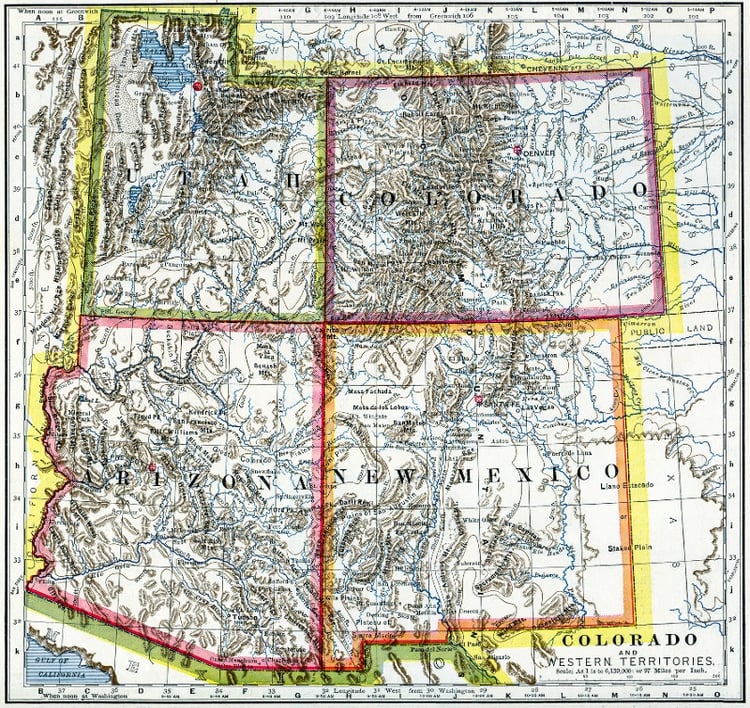
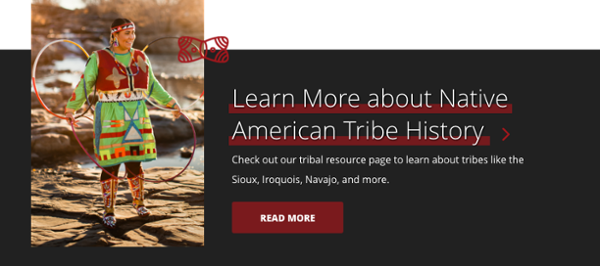
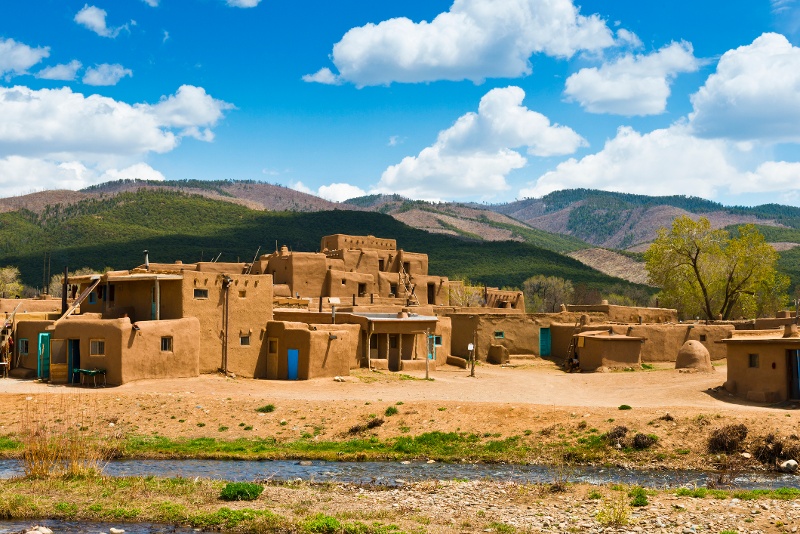
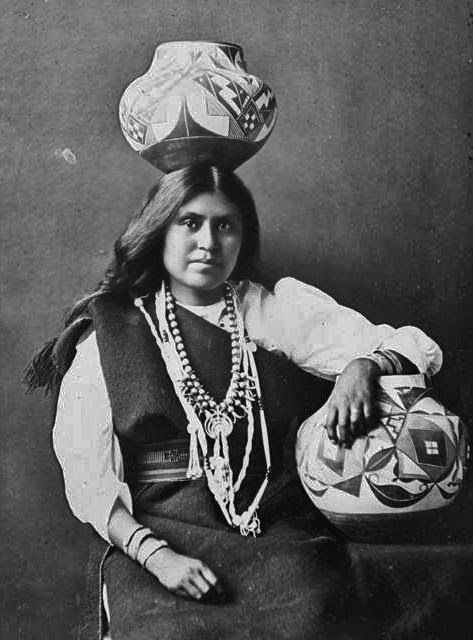
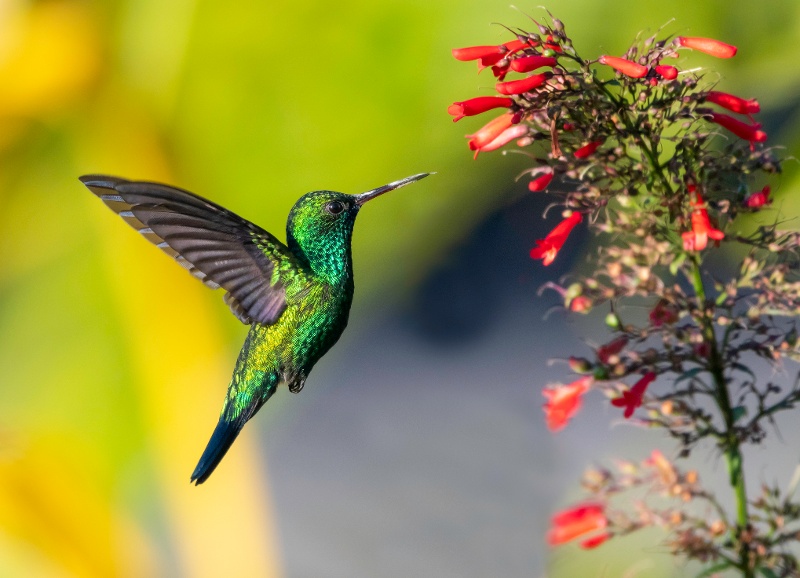

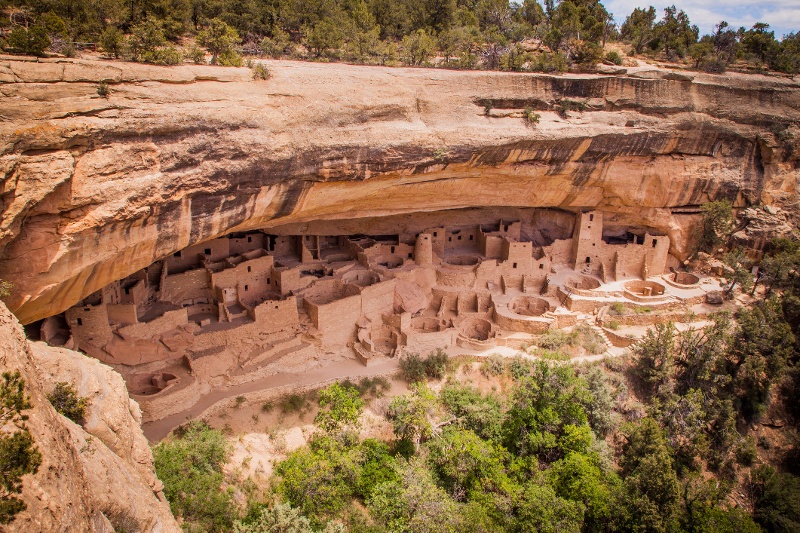

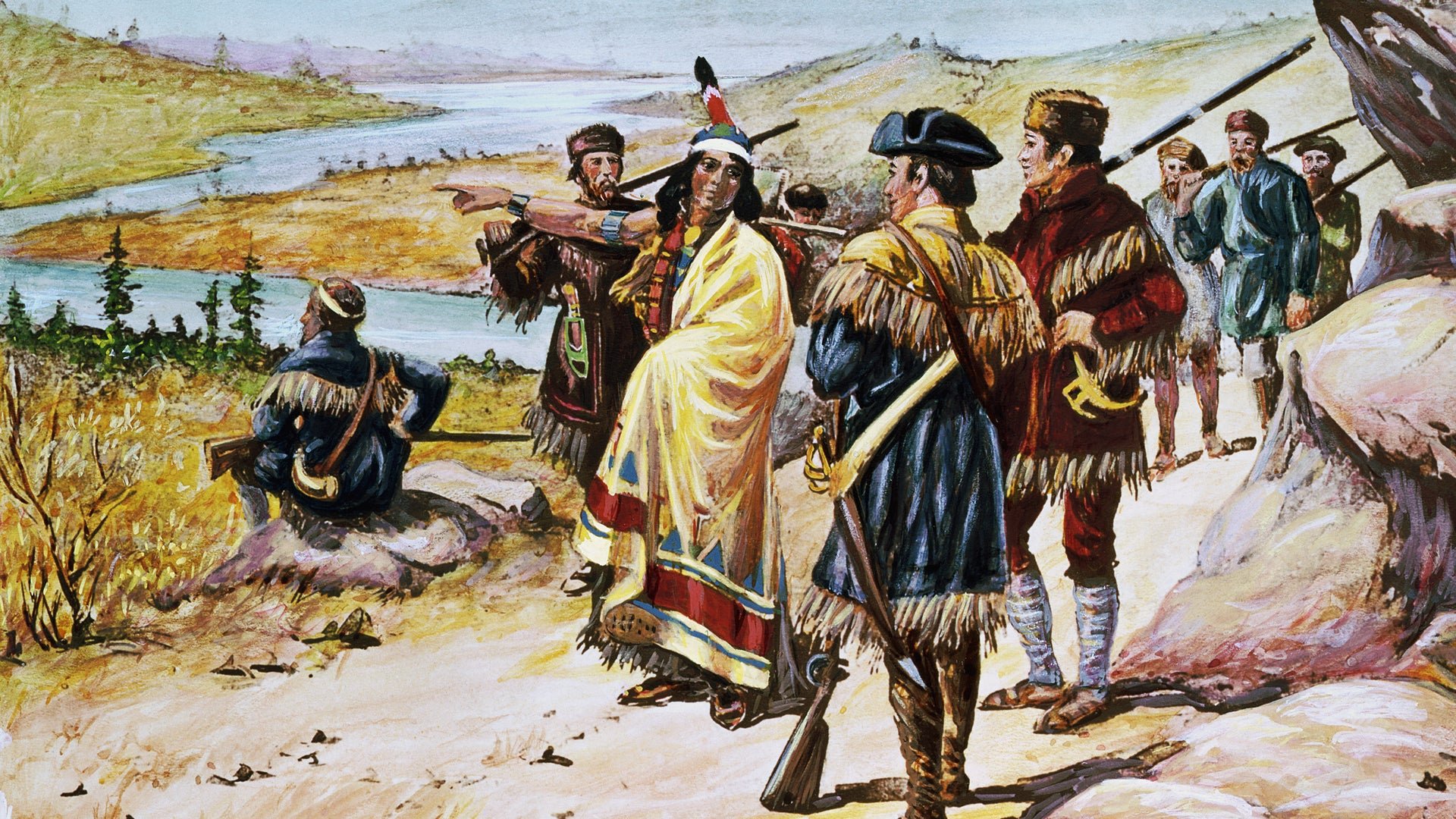
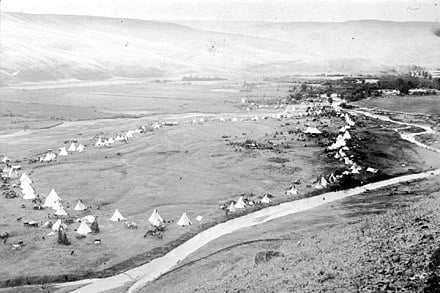

COMMENTS